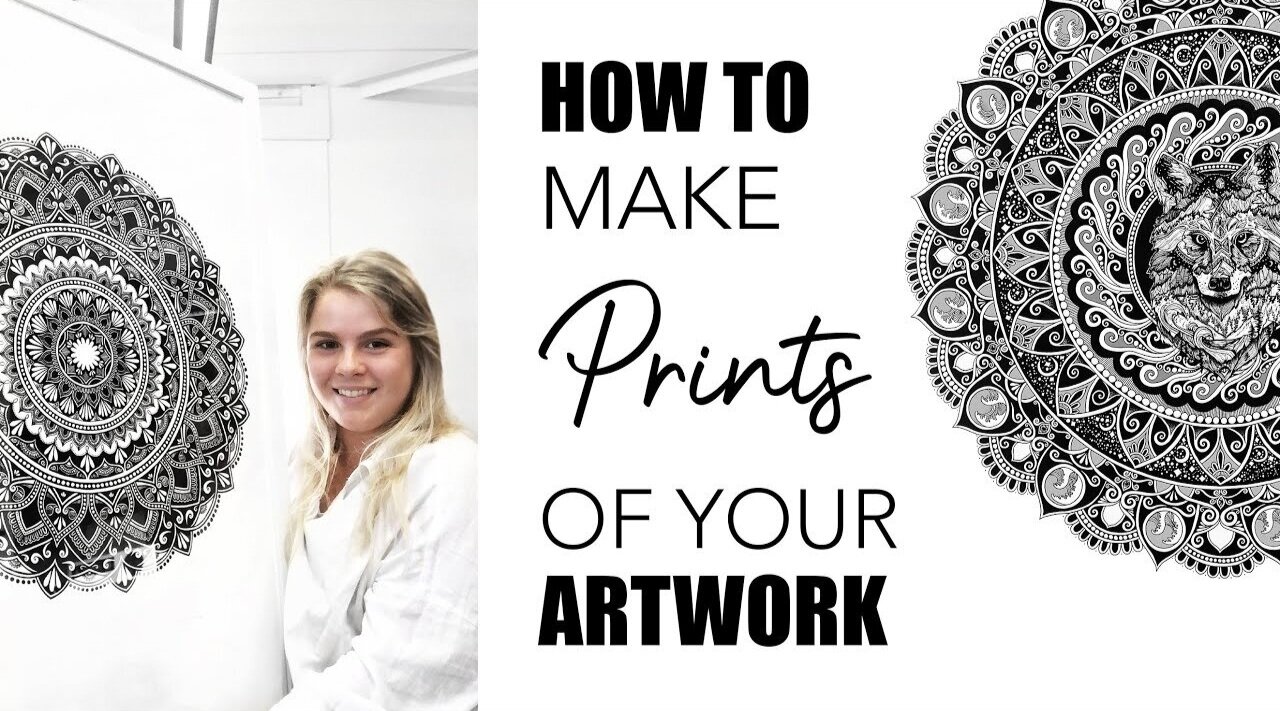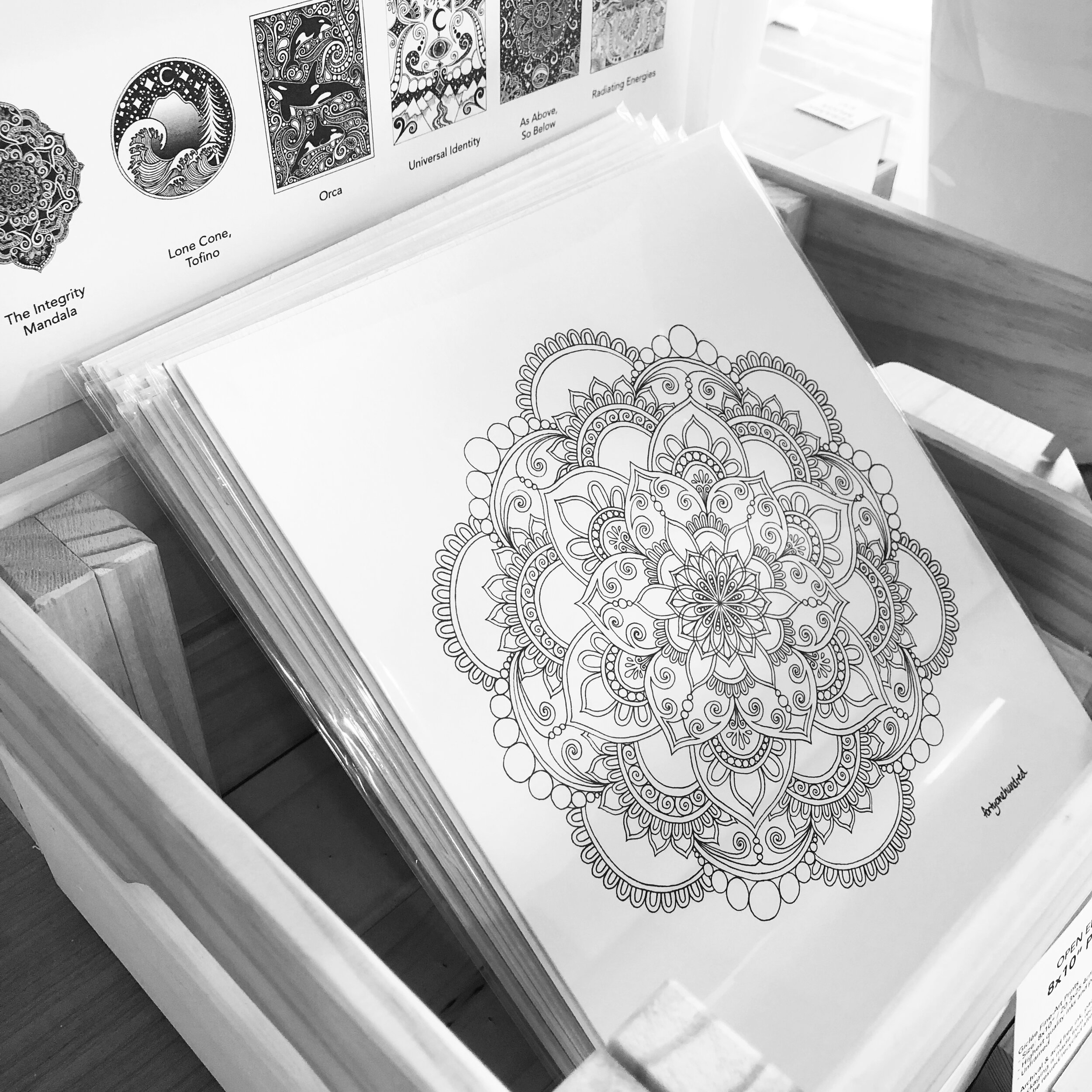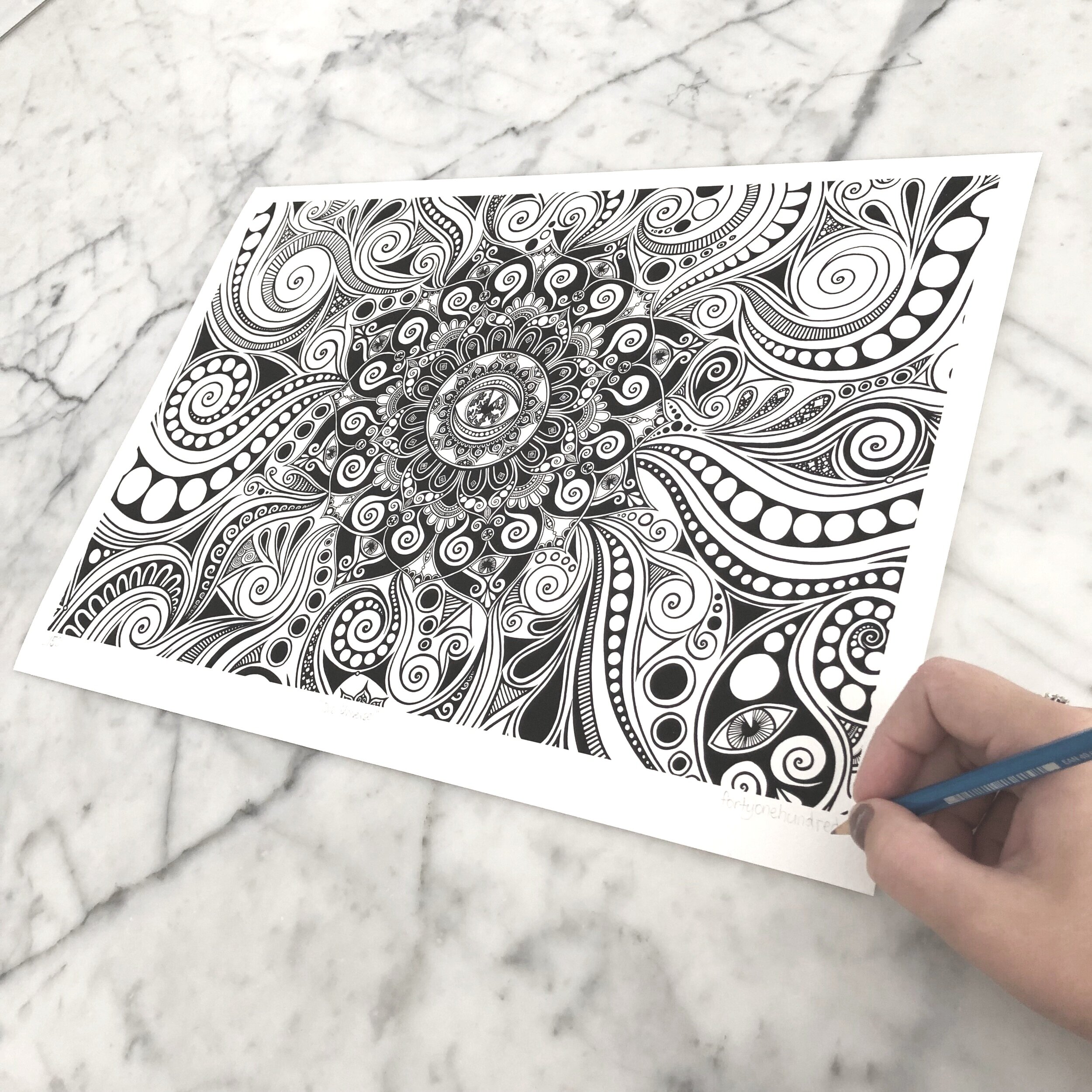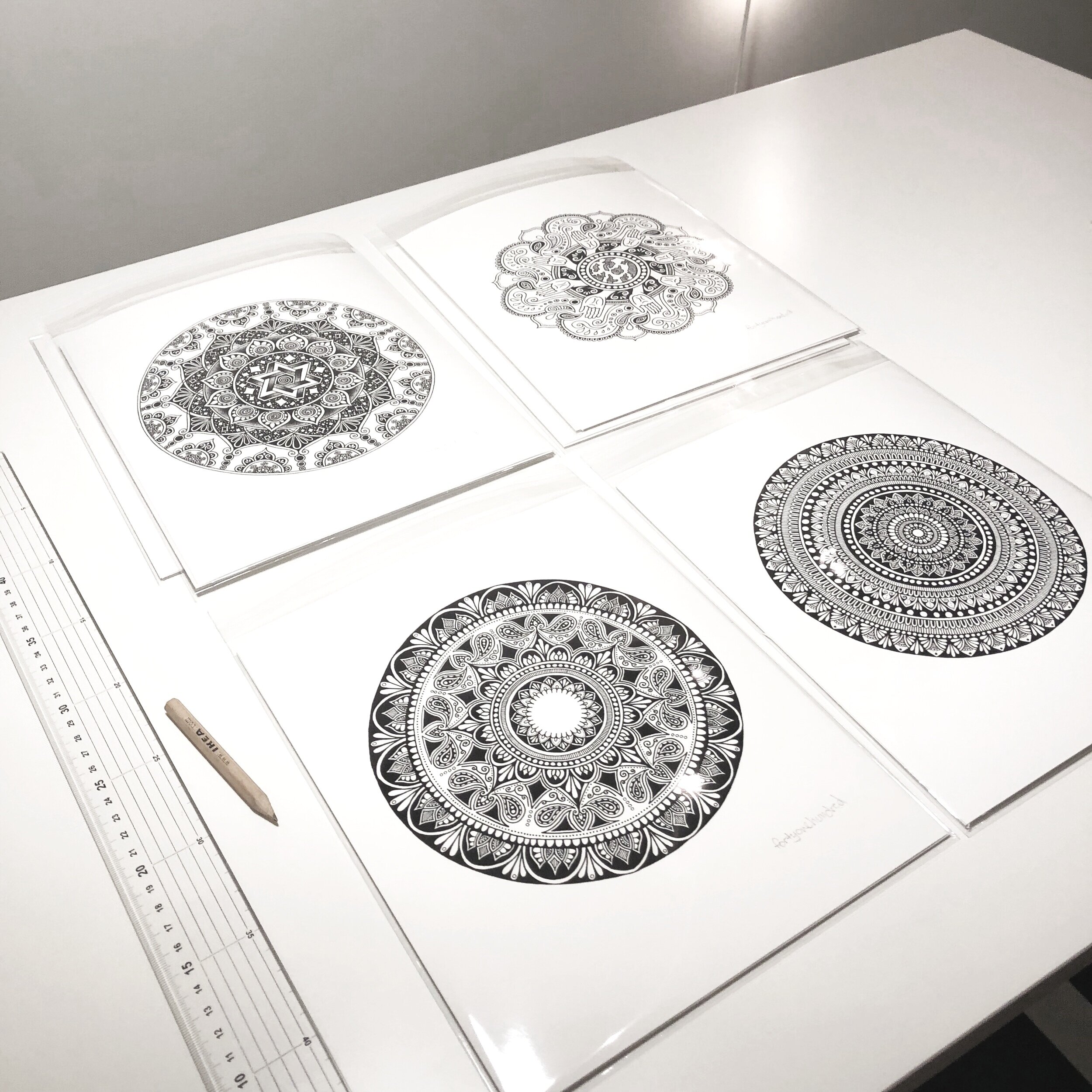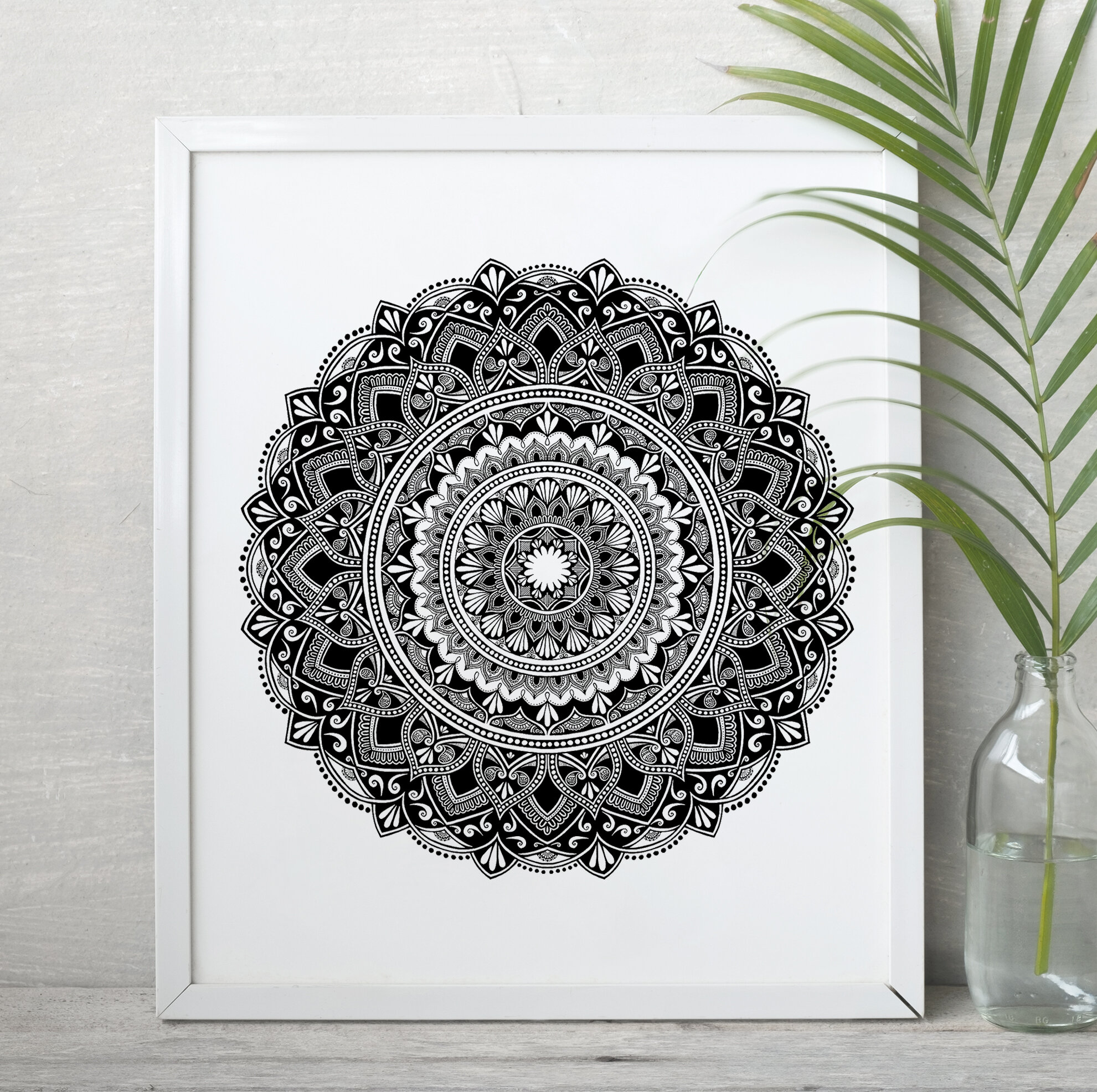Making prints is an excellent addition to your offerings when selling your art. It extends the opportunity of an artwork for both the artist as well as collectors. Here I’ll explain the step-by-step of how I create prints of your artwork! Including the photographing/scanning, the file prep, and choosing how to get the prints made.
Are you a visual learner?
Watch the video instead
Step 1: Digitize your artwork
To get your artwork ready to print or have printed, it needs to be digitized. You can either photograph your work (with a DSLR or high-quality camera), scan your work, or go to a professional to have it photographed/scanned. Many fine-art printing stores offer professional art scanning services.
*Tip: If photographing, make sure to stand straight-on so that the artwork is flat without any funny angles. You can see how I photograph my art in the video above!
Step 2: Put the artwork onto a fresh file
Using Adobe Photoshop (or an editing software of your choice), create a new file of the print size you want (e.g. 8x10”, A3, 16x20”, etc.). Then drag the photo onto this blank canvas
Step 3: Crop the excess
Using the crop, lasso or marquee tools (Photoshop) select the artwork and delete any other of the surrounding objects and background in the photo
Step 4: Edit the colours (Black and White)
If black & white: Use saturation, brightness/contrast, curves and black&white adjustments to make the artwork pure black and white. Make sure there are no grey areas.
If colour: Use colour balance, saturation, brightness/contrast, curves to make the colours match up with your vision. Work in CMYK colour profile at a minimum of 300 dpi. This will create the truest colours and best quality print.
Step 5: Tidy-up
Using the paintbrush tool (or eraser if you have a coloured layer underneath), go around the artwork and tidy up any imperfections, ink/paint splotches, dust marks, mistakes. Remember the goal is not to change the artwork, just to tidy up small imperfections to make the finished product professional and high quality.
Step 6: Positioning
Position the artwork on the page; do you want it dead centre? Or slightly higher than centre? You choose. Personally I like to have my prints slightly higher to leave room for signing.
Step 7: Saving the file
Save the file as a large JPEG as well as a PDF. Most professional printers like to receive a PDF. Save different files for each size print you are making.
Step 8: Print decisions
Is your print going to be open-edition or limited-edition? Where is it going to be sold? Will it be rolled in tube or sent flat? Does it need packaging? What price will it be? Will the prints be signed? If the prints are signed, will it be a printed or hand-signed signature? These are examples of some of the different aspects to think about when producing a print.
Step 9: Choosing a printing method
You can print at home, use an online print service or go to a professional local printer.
When I started out, I printed at home as it was most economical. Now I use a professional fine-art printing service as they are the highest quality and I need my prints to be archival.
Step 10: Signing
If you are hand-signing your prints, the best method is pencil. Edition size in the bottom left corner, title in the middle, signature on the right. Or, you may choose your own method - just make sure it is consistent across all your prints. Signing your prints increases their value.
Step 11: Keep records
Make sure to keep records if your prints are limited-edition. How many are there? Which ones are sold? Which ones are on display where? Who has collected each print?
Step 12: Keep stock protected
Keep the prints lying flat in a dark, dry, clean area. Prints should only be rolled in a tube temporarily for shipping if you choose to do so.
Step 13: Sell your prints!
Through your website, social media, etsy, an art gallery, at fairs, wherever you choose to sell.

